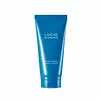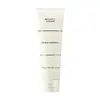What's inside
What's inside
 Key Ingredients
Key Ingredients

 Benefits
Benefits

 Concerns
Concerns

 Ingredients Side-by-side
Ingredients Side-by-side

Water
Skin ConditioningGlycerin
HumectantStearic Acid
CleansingMyristic Acid
CleansingButylene Glycol
HumectantPEG-32
HumectantPotassium Hydroxide
BufferingLauric Acid
CleansingLauryl Glucoside
CleansingGlyceryl Stearate
EmollientPEG-100 Stearate
Parfum
MaskingMangifera Indica Seed Butter
Skin ConditioningHelianthus Annuus Seed Oil
EmollientPEG-14m
Emulsion StabilisingOlive Oil PEG-8 Esters
EmollientSea Water
HumectantDisodium EDTA
Allantoin
Skin ConditioningSodium Methyl Cocoyl Taurate
CleansingPotassium Cocoyl Glycinate
Magnesium Aspartate
Skin ConditioningZinc Gluconate
Skin ConditioningBiosaccharide Gum-1
HumectantCalcium Gluconate
HumectantCopper Gluconate
Skin ConditioningWater, Glycerin, Stearic Acid, Myristic Acid, Butylene Glycol, PEG-32, Potassium Hydroxide, Lauric Acid, Lauryl Glucoside, Glyceryl Stearate, PEG-100 Stearate, Parfum, Mangifera Indica Seed Butter, Helianthus Annuus Seed Oil, PEG-14m, Olive Oil PEG-8 Esters, Sea Water, Disodium EDTA, Allantoin, Sodium Methyl Cocoyl Taurate, Potassium Cocoyl Glycinate, Magnesium Aspartate, Zinc Gluconate, Biosaccharide Gum-1, Calcium Gluconate, Copper Gluconate
Water
Skin ConditioningMyristic Acid
CleansingGlycerin
HumectantStearic Acid
CleansingPotassium Hydroxide
BufferingLauric Acid
CleansingDipropylene Glycol
HumectantSorbitol
HumectantGlycol Distearate
EmollientPEG-32
HumectantPEG-6
HumectantPEG-60 Glyceryl Isostearate
Sodium Methyl Cocoyl Taurate
CleansingGlyceryl Stearate
EmollientAscorbyl Glucoside
AntioxidantTocopheryl Acetate
AntioxidantHydrolyzed Soy Protein
HumectantCamellia Sinensis Leaf Extract
AntimicrobialPalmitoyl Hydroxypropyltrimonium Amylopectin/Glycerin Crosspolymer
Skin ConditioningSaxifraga Sarmentosa Extract
Skin ConditioningVitis Vinifera Fruit Extract
Skin ConditioningGlycyrrhiza Glabra Root Extract
BleachingMorus Bombycis Root Extract
Skin ConditioningScutellaria Baicalensis Root Extract
AstringentLecithin
EmollientSodium Hyaluronate
HumectantCucumis Sativus Fruit Extract
EmollientButylene Glycol
HumectantMethylisothiazolinone
PreservativeCaprylyl Glycol
EmollientPropylene Glycol
HumectantDisodium EDTA
Trisodium EDTA
Parfum
MaskingWater, Myristic Acid, Glycerin, Stearic Acid, Potassium Hydroxide, Lauric Acid, Dipropylene Glycol, Sorbitol, Glycol Distearate, PEG-32, PEG-6, PEG-60 Glyceryl Isostearate, Sodium Methyl Cocoyl Taurate, Glyceryl Stearate, Ascorbyl Glucoside, Tocopheryl Acetate, Hydrolyzed Soy Protein, Camellia Sinensis Leaf Extract, Palmitoyl Hydroxypropyltrimonium Amylopectin/Glycerin Crosspolymer, Saxifraga Sarmentosa Extract, Vitis Vinifera Fruit Extract, Glycyrrhiza Glabra Root Extract, Morus Bombycis Root Extract, Scutellaria Baicalensis Root Extract, Lecithin, Sodium Hyaluronate, Cucumis Sativus Fruit Extract, Butylene Glycol, Methylisothiazolinone, Caprylyl Glycol, Propylene Glycol, Disodium EDTA, Trisodium EDTA, Parfum
Ingredients Explained
These ingredients are found in both products.
Ingredients higher up in an ingredient list are typically present in a larger amount.
Butylene Glycol (or BG) is used within cosmetic products for a few different reasons:
Overall, Butylene Glycol is a safe and well-rounded ingredient that works well with other ingredients.
Though this ingredient works well with most skin types, some people with sensitive skin may experience a reaction such as allergic rashes, closed comedones, or itchiness.
Learn more about Butylene GlycolDisodium EDTA plays a role in making products more stable by aiding other preservatives.
It is a chelating agent, meaning it neutralizes metal ions that may be found in a product.
Disodium EDTA is a salt of edetic acid and is found to be safe in cosmetic ingredients.
Learn more about Disodium EDTAGlycerin is already naturally found in your skin. It helps moisturize and protect your skin.
A study from 2016 found glycerin to be more effective as a humectant than AHAs and hyaluronic acid.
As a humectant, it helps the skin stay hydrated by pulling moisture to your skin. The low molecular weight of glycerin allows it to pull moisture into the deeper layers of your skin.
Hydrated skin improves your skin barrier; Your skin barrier helps protect against irritants and bacteria.
Glycerin has also been found to have antimicrobial and antiviral properties. Due to these properties, glycerin is often used in wound and burn treatments.
In cosmetics, glycerin is usually derived from plants such as soybean or palm. However, it can also be sourced from animals, such as tallow or animal fat.
This ingredient is organic, colorless, odorless, and non-toxic.
Glycerin is the name for this ingredient in American English. British English uses Glycerol/Glycerine.
Learn more about GlycerinGlyceryl Stearate is a mix of glycerin and stearic acid.
It is used to stabilize the mixing of water and oil ingredients. By preventing these ingredients from separating, it can help elongate shelf life. It can also help thicken the product's texture.
As an emollient, it helps soften skin and supports barrier-replenishing ingredients.
In cosmetics, Glyceryl Stearate is often made from vegetable oils or synthetically produced.
This ingredient may not be fungal-acne safe
Fun fact: The human body also creates Glyceryl Stearate naturally.
Learn more about Glyceryl StearateLauric Acid is a fatty acid or lipid. About half of fatty acids in coconut oil is lauric acid.
This ingredient helps hydrate and sooth skin. As a humectant, it helps trap moisture. It also aids in cleaning and enhancing the texture of products.
Lauric acid may not be Malassezia folliculitis, or fungal acne, safe.
Learn more about Lauric AcidMyristic Acid is a saturated fatty acid. It is naturally found in milk fat. Other sources include palm oil, coconut oil, and butter fat.
Myristic Acid is an emulsifer and cleanser. As an emulsifer, it stabilizes a product by preventing ingredients from separating. Myristic Acid helps clean your skin by acting as a surfactant. It tends to gather oil and dirt on your skin to be easily rinsed away.
One study from 2021 found Myristic Acid to have anti-inflammatory properties.
Learn more about Myristic AcidParfum is a catch-all term for an ingredient or more that is used to give a scent to products.
Also called "fragrance", this ingredient can be a blend of hundreds of chemicals or plant oils. This means every product with "fragrance" or "parfum" in the ingredients list is a different mixture.
For instance, Habanolide is a proprietary trade name for a specific aroma chemical. When used as a fragrance ingredient in cosmetics, most aroma chemicals fall under the broad labeling category of “FRAGRANCE” or “PARFUM” according to EU and US regulations.
The term 'parfum' or 'fragrance' is not regulated in many countries. In many cases, it is up to the brand to define this term.
For instance, many brands choose to label themselves as "fragrance-free" because they are not using synthetic fragrances. However, their products may still contain ingredients such as essential oils that are considered a fragrance by INCI standards.
One example is Calendula flower extract. Calendula is an essential oil that still imparts a scent or 'fragrance'.
Depending on the blend, the ingredients in the mixture can cause allergies and sensitivities on the skin. Some ingredients that are known EU allergens include linalool and citronellol.
Parfum can also be used to mask or cover an unpleasant scent.
The bottom line is: not all fragrances/parfum/ingredients are created equally. If you are worried about fragrances, we recommend taking a closer look at an ingredient. And of course, we always recommend speaking with a professional.
Learn more about ParfumPEG-32 is a synthetic and water-soluble polymer with 32 repeating units. It has humectant, solvent, and emulsifying properties.
As a solvent and emulsifier, it helps dissolve and blend ingredients. It is also able to attract water as a humectant to help hydrate skin. According to a manufacturer, this ingredient is non-greasy, gentle, and mildly scented.
Japanese manufacturers will sometimes call this ingredient PEG 1540.
Learn more about PEG-32Potassium hydroxide is commonly known as caustic potash. It is used to fix the pH of a product or as a cleaning agent in soap. In cleansers, it is used for the saponification of oils.
Sapnification is the process of creating fatty acid metal salts from triglycerides and a strong base. During this process, Potassium Hydroxide is used up and is not present in the final product.
Using high concentrations of Potassium Hydroxide have shown to irritate the skin.
Learn more about Potassium HydroxideThis gentle cleansing and foaming ingredient is known for leaving a smooth feeling in skin and hair. It is made using coconut oil.
According to the manufacturer, it is soluble in water and has resistance to hard water, acid, and alkali.
Due to its coconut base, it may not be Malassezia folliculitis safe.
Learn more about Sodium Methyl Cocoyl TaurateStearic Acid is a fatty acid. It is an emollient, emulsifier, and texture enhancer.
As an emollient, stearic acid helps soften skin. It aids the skin's protective barrier by preventing water loss. It also provides a gentle cleansing effect without stripping away natural oils.
Stearic acid may also be used to enhance the texture of products. It can add volume and stabilize ingredients such as water and oil. This can help water and oil ingredients from separating.
Sources of stearic acid include animal or vegetable fats/oils such as coconut or shea. It can be naturally found in butter, cocoa butter, shea butter, vegetable fats, and animal tallow.
This ingredient may not be Malassezia folliculitis, or fungal-acne safe.
Learn more about Stearic AcidWater. It's the most common cosmetic ingredient of all. You'll usually see it at the top of ingredient lists, meaning that it makes up the largest part of the product.
So why is it so popular? Water most often acts as a solvent - this means that it helps dissolve other ingredients into the formulation.
You'll also recognize water as that liquid we all need to stay alive. If you see this, drink a glass of water. Stay hydrated!
Learn more about Water